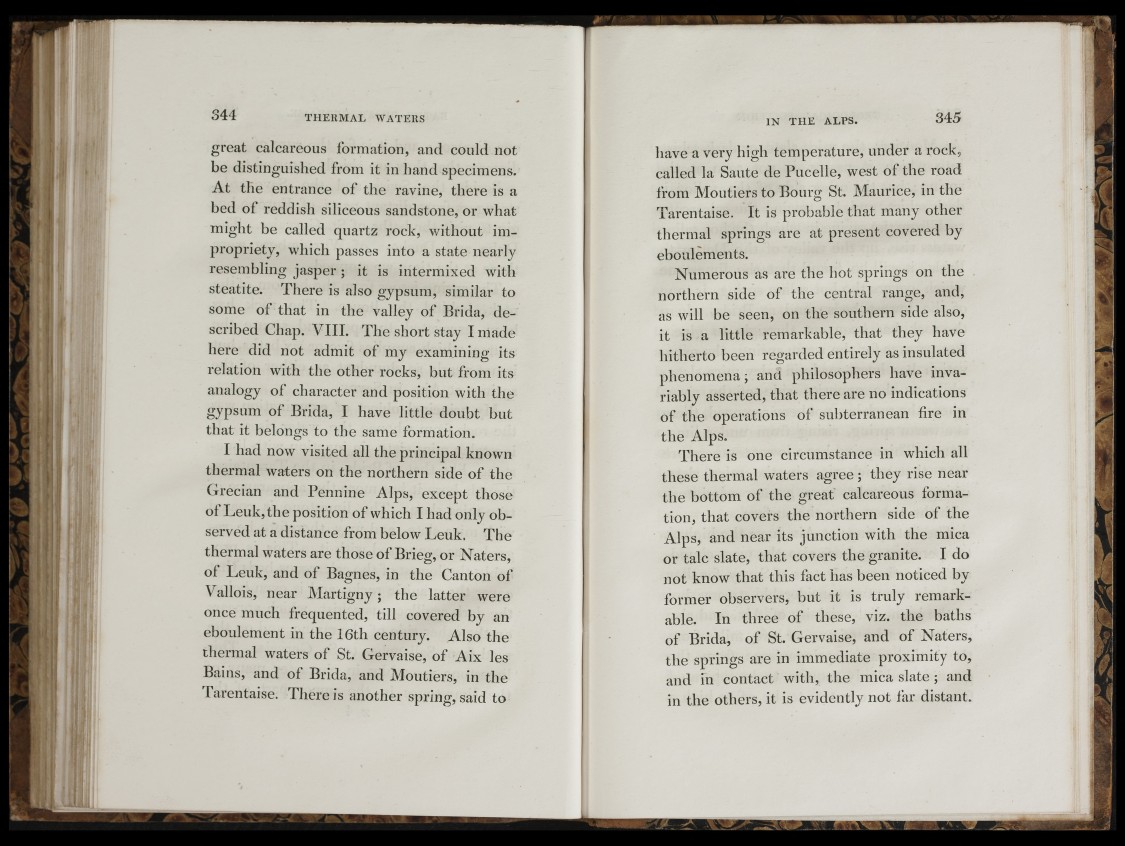
m
great calcareous formation, and could not
be distinguished from it in hand specimens.
At tlie entrance of the ravine, there is a
bed of reddish siliceous sandstone, or what
might be called quartz rock, without im-
proprietv, which passes into a state nearly
resembling jasper ; it is intermixed with
steatite. There is also gypsum, similar to
some of that in the valley of Brida, described
Chap. VIII. The short stay I made
here did not admit of my examining its
relation with the other rocks, but from its
analogy of character and position with the
gypsum of Brida, I have little doubt but
that it belongs to tbe same formation.
I had now visited all the principal known
thermal waters on the northern side of the
Grecian and Pennine Alps, except those
of Leiik,the position of which I had only observed
at a distance from below Leuk. The
thermal waters are those of Brieg, or Naters,
of Leuk, and of Bagnes, in the Canton of
Vallois, near Martigny; the latter were
once much frequented, till covered by an
eboulement in the 16th century. Also the
thermal waters of St. Gervaise, of Aix les
Bains, and of Brida, and Moutiers, in the
Tarentaise. There is another spring, said to
have a very high temperature, under a rock,
called la Saute de Pucelle, west of the road
from Moutiers to Bourg St. Maurice, in the
Tarentaise. It is probable that many other
thermal springs are at present covered by
eboulements.
Numerous as are the hot springs on the
northern side of the central range, and,
as will be seen, on the southern side also,
it is a little remarkable, that they have
hitherto been regarded entirely as insulated
phenomena; and philosophers have invariably
asserted, that there are no indications
of the operations of subterranean fire in
the Alps.
There is one circumstance in which all
these thermal waters agree; they rise near
the bottom of the great calcareous formation,
that covers the northern side of the
Alps, and near its junction with the mica
or talc slate, that covers the granite. I do
not know that this fact has been noticed by
former observers, but it is truly remarkable.
In three of these, viz. the baths
of Brida, of St. Gervaise, and of Naters,
the springs are in immediate proximity to,
and in contact with, the mica slate ; and
in the others, it is evidently not far distant.
P